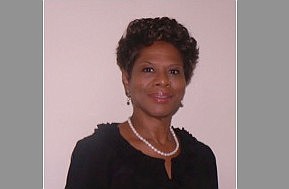- April 24, 2024
-
-
Loading

Loading

I had the opportunity recently to meet with Dr. Tracy Umpenhour, exceptional student education director for Flagler Schools, to discuss “full inclusion” of students with disabilities for the 2014-2015 school year.
The meeting was prompted by contact from concerned parents and at the request of the NAACP Education Committee. Our meeting was like old friends getting together. I hired Dr. Umpenhour as a school psychologist when I served as Flagler Schools ESE and Student Services Director before my retirement a few years back. She came to Flagler County with a desire to serve the community and its students to the best of her ability. She has worked hard to always be knowledgeable about current research on educating children who exhibit challenges in the education environment and how to best meet their needs while maintaining high standards, and adherence to state and federal laws.
After the small talk, we got down to business about how she was implementing full inclusion. Well, it is not what everyone thought. Most persons not familiar with inclusion think of it as placing all students with disabilities in classes with general education students, without regards for their individualized needs. In addition, the question was raised about the needs of nondisabled students in meeting academic standards and provision of resources and supports.
Well, everyone can rest assured that all students are being educated appropriately in a class that leads to individual growth and expectations of high achievement. Inclusion is supported by the Individuals with Disabilities Education Act, a federal mandate that ensures students with disabilities are education to the extent possible with nondisabled peers, in the least restrictive environment.
For those students with the most significant cognitive, behavioral or medical needs, inclusion may not be appropriate and therefore the school maintains some cluster (self-contained) programs. Students identified on the autism spectrum are also considered individually for inclusion based on their individual characteristics including language/communication, behavior and therapeutic needs. The district provides behavioral specialists, speech and language pathologists, occupational and physical therapists, mental health counseling and parent support.
Through state projects, training has been and is provided to general education teachers and administrators to educate them on how and what to do in teaching students with disabilities. Use of technology is a part of the program. Training, started in 2011 toward implementing full inclusion districtwide. In my professional opinion, most of the strategies are just good pedagogy with a few specialized techniques thrown in.
When students are educated in diverse classrooms, everyone benefits. I applaud Dr. Umpenhour and her team of professionals. Parents and other concerned citizens need to communicate their concerns directly to ESE staff rather than make assumptions about what’s happening.
Inclusion mimics real life. My mother was a teacher back in the day. She taught elementary grades for 38 years starting in 1950. No students were educated differently based on disability. That was full inclusion.
Dr. Myra Middleton-Valentine is a retired Flagler County ESE Director, currently adjunct professor and teacher-intern supervisor at Flagler College.